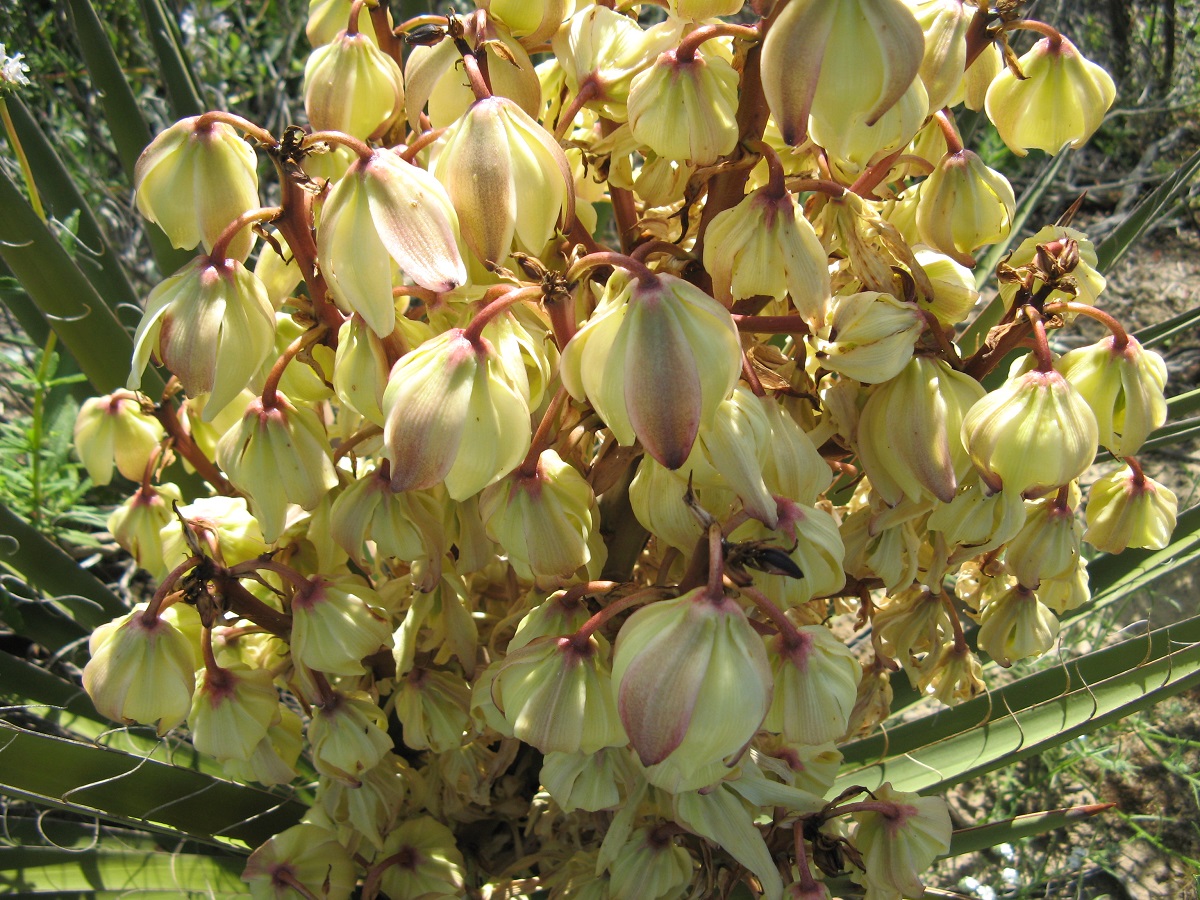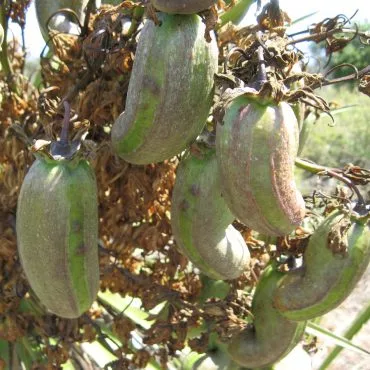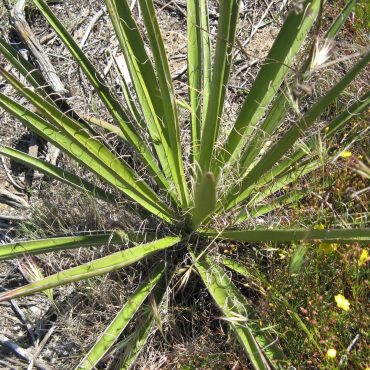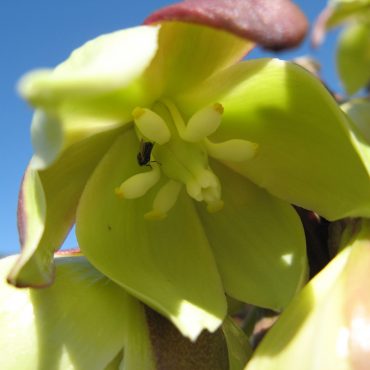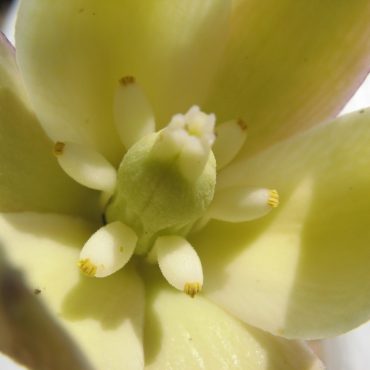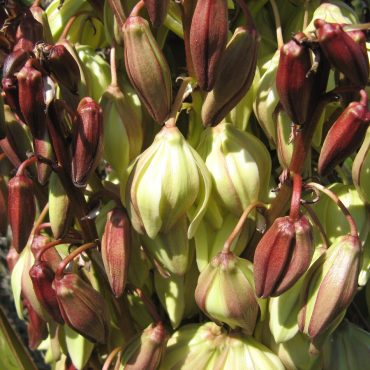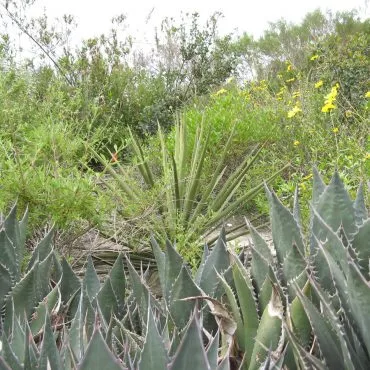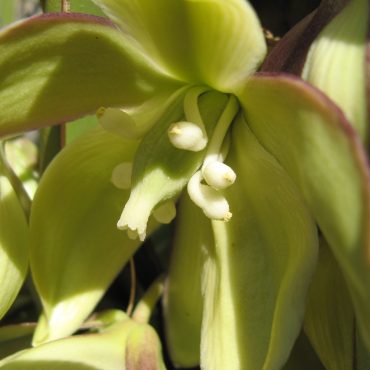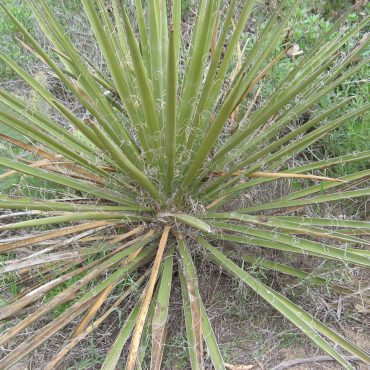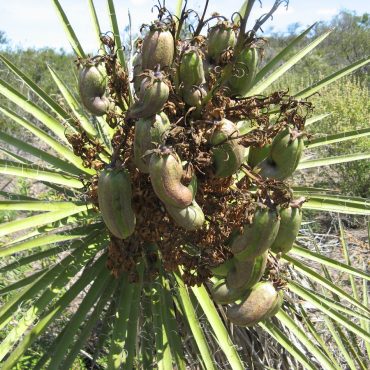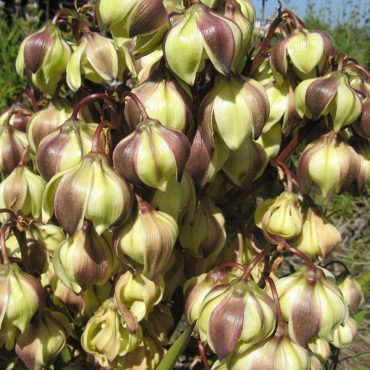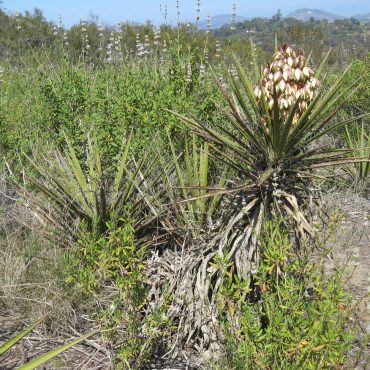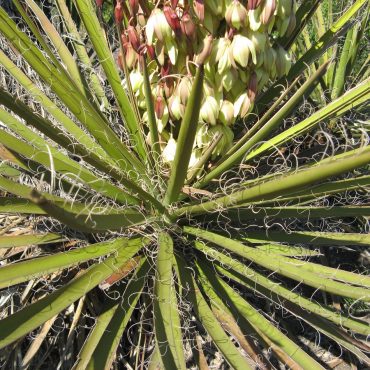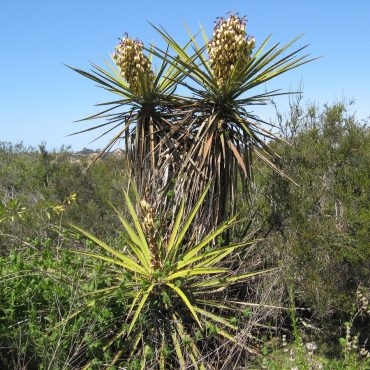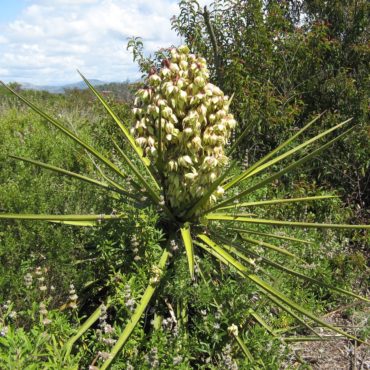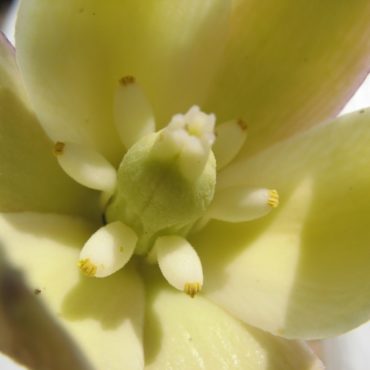Description
2,5,41,76
Mojave yucca is an evergreen shrub or small tree, usually less than 16 feet (15 m) tall, with a thick woody trunk that may be sparingly branched. Vegetative reproduction produces small clumps of plants. The upper portion of the trunk is cloaked with dead leaves, the lower portion is often bare with gray-brown, scaly bark. Clusters of long, stiff, dagger-like leaves are produced at the tops of the branches. Leaves are up to 60 inches (150 cm) long, with stringy fibers curling from the margins and spiny tips. Older Mojave yuccas resemble small Joshua Trees.
Spectacular clusters of densely-packed, bell-shaped flowers are produced in or above the terminal leafy clusters. The bisexual flowers are usually 1-2 inches (3-5 cm) long. The sepals and petals are identical (together called tepals); there are six waxy, cream-colored tepals, free or partly fused at the bases. The outer three tepals are often tinged with purple. There is a single greenish-white pistil with a large, superior ovary, inconspicuous style, and three-lobed stigma. (In our plants, the stigma appears as three double lobes.) At the center of the stigma is a depression. There are six stamens; the filaments are fleshy and flattened front to back and curve up around the ovary. Anthers are attached to the filaments at their bases. Pollen is produced in discrete packets of pollen (called pollinia), rather than released as single grains. Mojave yuccas generally bloom from April to May,1 although we have found blooms as early as late February in the Reserve.327
The fruits are pendulous green capsules with white flesh. They are usually 2-4 inches (5-11 cm) long and dry to leathery brown in late summer. In shape, the fruit somewhat resembles a green chili pepper. There are six chambers each of which contains many flattened seeds. Seeds are often dispersed by animals feeding on or stashing the fruit.5

